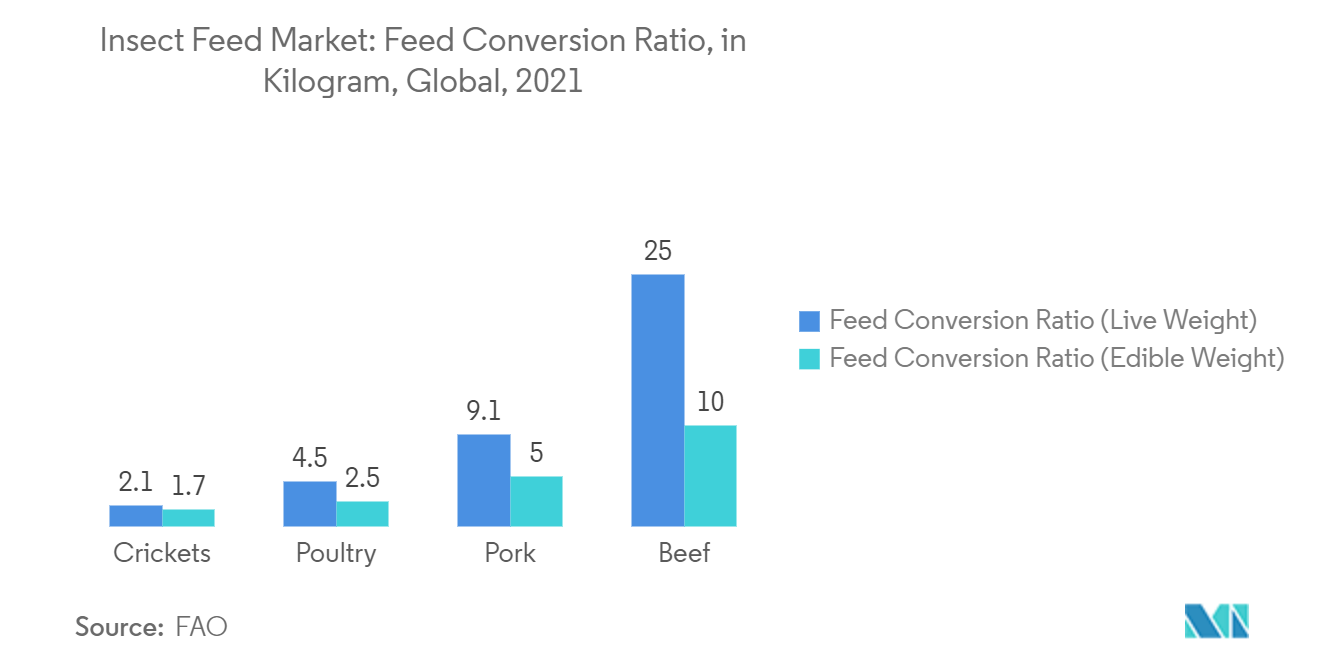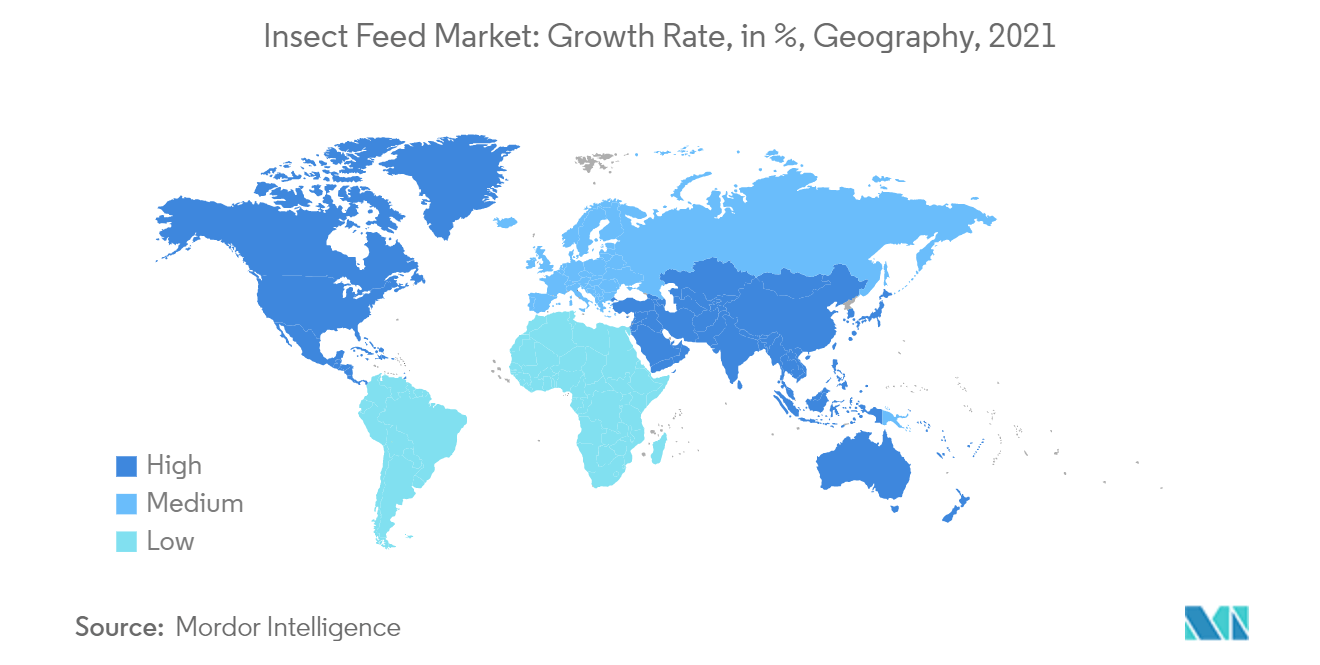Market Trends of Insect Feed Industry
This section covers the major market trends shaping the Insect Feed Market according to our research experts:
High Feed Conversion Ratio of Insects
The population on the earth is expected to increase to 9 billion by 2050. With a growing world population and increasingly demanding consumers, producing sufficient protein from livestock, poultry, and fish represents a severe challenge for the future. Approximately 1,900 insect species are eaten worldwide, mainly in developing countries. They constitute quality food and feed, have high feed conversion ratios, and emit low levels of greenhouse gases. Hence, the demand for the production and consumption of edible insects is increasing because of their high nutritional value and low risk of transmitting zoonotic diseases.
Insects contain more protein and low fat than traditional meats, such as poultry and livestock. They also emit fewer greenhouse gases and ammonia than conventional livestock and can be grown on organic waste. This is driving the market growth. Insects are efficient in converting feed into protein. For instance, crickets need 12 times less feed than cattle, four times less feed than sheep, and half as much feed as pigs and broiler chickens to produce the same amount of protein. Additionally, Estimates show that up to 80% of a cricket is edible and digestible, compared with 55% for chicken and pigs and 40% for cattle. Insects, being cold-blooded animals, do not require energy to maintain their body temperature and hence, require less feed. Thus, rearing these insects and their usage as feed for animals has become prominent in developed and developing countries.
The need for grain and protein feeds is likely to increase as the demand for meat rises. For instance, livestock requires about 6 kg of plant protein to get 1 kg of animal protein. Feed-to-meat conversion rates (amount of feed needed to produce a 1 kg increase in weight) vary widely depending on the animal types and the production practices used. Typically, 1 kg of live animal weight in the US production system requires the respective amount of feed, i.e., 2.5 kg of chicken, 5 kg of pork, and 10 kg of beef, whereas insects require much less feed. Thus, the high feed conversion ratio and high nutritional value of insects compared to livestock and poultry may drive the growth of the insect market during the forecast period.

Asia-Pacific Dominates the Market
In Asia-Pacific, the growing meat consumption compelled the demand for nutritious insect feed in recent years. China is the largest market for insect feed in the Asia Pacific region. The consumption of meat is high and has been increasing from the past few years. According to the Organization for Economic Co-operation and Development (OECD), the per capita consumption of meat in China is expected to increase from 44.4 kg in 2020 to 52.84 kg in 2029. To meet the growing demand for nutritious meat in the country, livestock is being fed with protein-rich insects. This, in turn, has led to the development of the insect feed industry for livestock, such as poultry and swine, in China, driving the overall insect feed market in the country.
Along with this, insect farming is a unique breeding industry in rural China, and it is a source of income for local people. Insects are reared and bred for animal feed using two approaches in China. The insects are either fully domesticated and reared completely in captivity or are partially raised in captivity, and the insect habitat is manipulated to increase production. Furthermore, local Chinese companies, like Haocheng Mealworms Inc. and Guangzhou Wuliang Biotechnology Co. Ltd, have been producing insect feed rather than relying on soybean imports from the United States for animal feed, which drives to attain self-sustainability. Such developments in the country fuel the insect feed market's revenue in China. Hence, the region is anticipated to witness robust growth, owing to the increasing demand for insect feed across various countries, such as China, South Korea, and Japan, coupled with increased animal protein demand.
Furthermore, India is the second largest market for insect feed next to China. According to the FAO, in India, conventional feeds, such as soybean and maize account for 60% of the total cost of raising farm animals. Therefore, the focus is being shifted toward developing grasshopper feeds for farm animals in the country to save production costs and bridge the demand-supply gap of feedstuffs, such as maize and soybean, as a result of competition between humans and livestock for these resources. The gradual surge in demand for meat and meat-based products raised concerns over malnutrition since large swathes of farmland are diverted to grow resource-intensive poultry products. In July 2021, the Bangalore-based company, Nandus Foods, successfully experimented by replacing soy with insect protein and converting food waste into high-grade protein for poultry using the black soldier fly (BSF). These factors are driving the insect feed market in the country.

